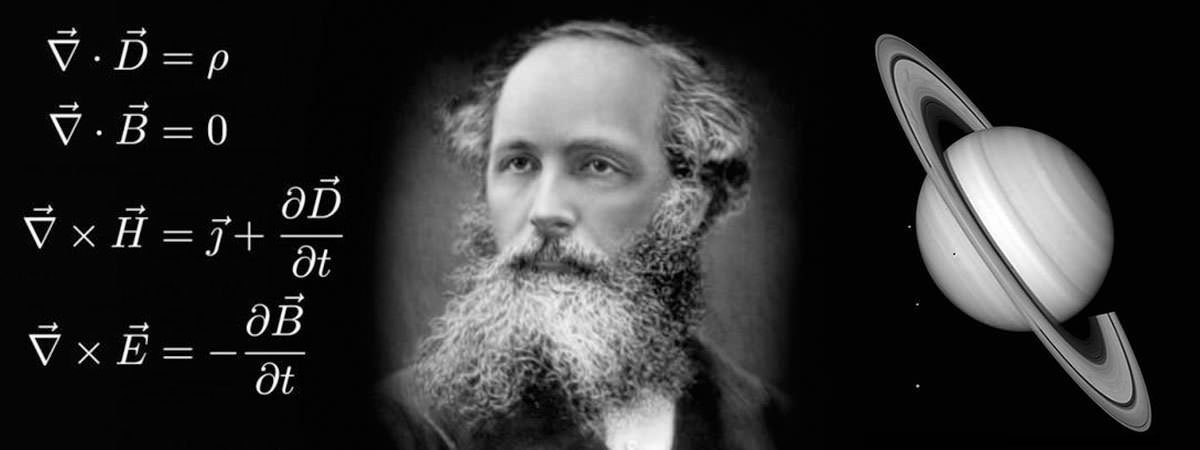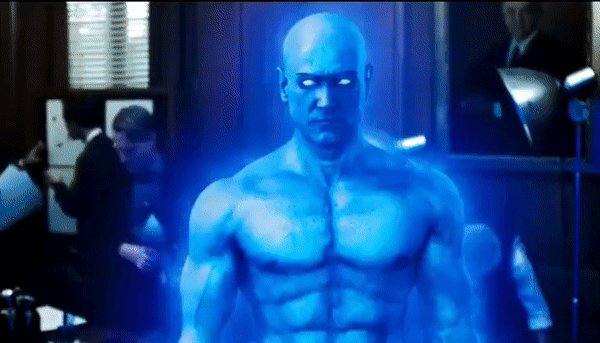Home › Forum Online Discussion › General › Researchers uncover an anomaly in the electromagnetic duality of Maxwell Theory
- This topic has 2 replies, 1 voice, and was last updated 5 years, 6 months ago by
c_howdy.
-
AuthorPosts
-
October 29, 2019 at 9:07 pm #59473
c_howdy
Participant
by Ingrid Fadelli , Phys.org
https://phys.org/news/2019-10-uncover-anomaly-electromagnetic-duality-maxwell.html
Researchers at the Kavli Institute for the Physics and Mathematics of the Universe (WPI) and Tohoku University in Japan have recently identified an anomaly in the electromagnetic duality of Maxwell Theory. This anomaly, outlined in a paper published in Physical Review Letters, could play an important role in the consistency of string theory.
The recent study is a collaboration between Yuji Tachikawa and Kazuya Yonekura, two string theorists, and Chang-Tse Hsieh, a condensed matter theorist. Although the study started off as an investigation into string theory, it also has implications for other areas of physics.
In current physics theory, classical electromagnetism is described by Maxwell’s equations, which were first introduced by physicist James Clerk Maxwell around 1865. Objects governed by these equations include electric and magnetic fields, electrically charged particles (e.g., electrons and protons), and magnetic monopoles (i.e. hypothetical particles carrying single magnetic poles).
So far, researchers have been unable to observe magnetic monopoles, yet theoretical predictions have pointed to their existence for several decades. A key implication of the existence of magnetic monopoles is the quantization of all electric charges in the universe, originally introduced by Paul Dirac in 1931.
“In four spacetime dimensions, electric charges are always integer multiples of some minimum number, if there exists a magnetic monopole,” Hsieh, Tachikawa and Yonekura told Phys.org via email. “This is called Dirac quantization of charges.”
Assuming the presence of both electric and magnetic charges, the Maxwell equations respect a certain symmetry, which is known as electromagnetic duality. This symmetry is attained by exchanging the electric charge and the magnetic monopole.
What happens to this electromagnetic duality when the system is quantized? Although this may seem like a natural question, very few studies have tried to answer it, particularly in situations where going around a particular path in the spacetime results in nontrivial duality actions.
“Now, let us come back to the string theory side of our study,” the researchers said. “String theory has ten spacetime dimensions, and there is a higher dimensional analog of Dirac quantization. However, it is also known that some objects in string theory, called orientifolds, violate Dirac quantization.”
Generally, when there is an apparent inconsistency in string theory, closer inspection tends to explain it and provide evidence confirming the theory’s validity. While some researchers were able to partially explain the violation of Dirac quantization observed in orientifolds by considering anomalies of fermions, in a previous study, Tachikawa and Yonekura suggested the need for a subtler effect that involves quantum properties of electromagnetic duality.
“We found that this duality symmetry is slightly violated quantum mechanically,” the researchers explained. “This is the anomaly studied in the paper. Moreover, the violation is precisely canceled against the violation of Dirac quantization in string theory. Our observations could thus help to save string theory from this inconsistency.”
In their study, Hsieh, Tachikawa and Yonekura analyzed the anomaly they identified in the electromagnetic duality of Maxwell theory using two inter-related methods. First, they considered it as living on the boundary of a symmetry-protected topological phase of matter.
“This is a point of view developed in the last several years by condensed-matter theorists, and one famous example is that gapless fermions appear on the surface of topological insulators,” Hsieh, Tachikawa and Yonekura explained. “In our case, we consider 3+1-dimensional Maxwell theory as living on the boundary of a 4+1 dimensional topological phase of matter.”
The setup used by the researchers is slightly different from those studied by condensed matter physicists, who typically focus on theories up to three spatial dimensions and one time dimension. The techniques usually employed by condensed matter physicists, however, could also be applied to this anomaly.
“Hsieh worked on the anomaly of 3+1 dimensional fermions from this point of view in his previous work , so we decided to combine forces to study the anomaly of the Maxwell theory in this manner,” the researchers explained. “In the end, we found that the anomaly of the Maxwell theory we determined in this work was the same as the anomaly of 56 fermions previously determined by Hsieh in his paper.”
The second way in which the researchers analyzed the anomaly in the electromagnetic duality of Maxwell theory involves string theory. More precisely, they considered it within the context of M-theory, which is believed to be the unification of all string theories.
Although electromagnetic duality is somewhat mysterious in four spacetime dimensions, it becomes manifest if considered from the perspective of M-theory. Moreover, M-theory provides a way to analyze how electromagnetic duality is slightly violated by what is known as a gravitational anomaly. The researchers were also able to use this theory to explain why the Maxwell theory has the same anomaly as 56 fermions.
“There is a huge amount of evidence that string theory is a consistent theory of quantum gravity, regardless of whether it describes our world or not,” Hsieh, Tachikawa and Yonekura said. “Our work adds a small but new piece evidence that string theory is really consistent in a subtle and surprising way.”
The analyses carried out by Hsieh, Tachikawa and Yonekura confirm the consistency of string theory, explaining the inconsistencies that they identified in their previous studies. In addition, their work provides interesting insight about Maxwell theory, which is one of the most studied physical constructs.
“Even 150 years after Maxwell introduced his equations, there are still so much to be discovered,” the researchers said. “More concretely, it is often useful to ‘gauge’ a symmetry, which essentially means to make it both local and dynamical. The electromagnetism and the gravitation arise out of gauging the phase-rotation symmetry of wavefunctions of charged particles, and gauging the general coordinate transformation of the spacetime, respectively. Our results imply that it is not possible to gauge the electromagnetic duality symmetry, due to its anomaly.”
Although the recent study carried out by this team of researchers led to some interesting findings, it does not paint a complete picture of Dirac quantization in string theory. In their future work, the researchers thus intend to investigate this topic further, in the hope of making new fascinating discoveries.
“We would also like to understand more deeply the relation between the anomaly of a d-dimensional system and the symmetry-protected topological phases in (d+1) dimensions,” the researchers said. “Many papers have been written on this issue, both by condensed-matter theorists and by string theorists, but there seem to be much more to be understood.”
More information: Anomaly of the electromagnetic duality of Maxwell Theory. DOI: 10.1103/PhysRevLett.123.161601.
journals.aps.org/prl/abstract/ … ysRevLett.123.161601Quantised singularities in electromagnetic field. DOI: 10.1098/rspa.1931.0130. https://royalsocietypublishing.org/doi/abs/10.1098/rspa.1931.0130
Why are fractional charges of orientifolds compatible with Dirac quantization? arXiv:1805.02772 [hep-th]. arxiv.org/abs/1805.02772
Discrete gauge anomalies revisited. arXiv:1808.02881 [hep-th]. arxiv.org/abs/1808.02881
Journal information: Physical Review Letters

Figure showing the action of the duality of the Maxwell theory on electric and magnetic charges. Credit: Hsieh et al.

Figure showing the relation between the Maxwell theory and 56 fermions, as understood from string and M-theory. Credit: Hsieh et
October 30, 2019 at 11:55 am #59475c_howdy
Participant November 14, 2019 at 10:06 am #59504
November 14, 2019 at 10:06 am #59504c_howdy
ParticipantMICHIO KAKU: And what else can we do. We can also unlock the secrets of the Big Bang. You see Einstein’s equations break down at the instant of the Big Bang at the center of the black hole…

https://phys.org/news/2019-11-cosmologist-lonely-big-theory.html
Top cosmologist’s lonely battle against ‘Big Bang’ theory
by Ivan Couronne, Issam Ahmed
NOVEMBER 14, 2019
James Peebles won this year’s Nobel prize in physics for helping transform the field of cosmology into a respected science, but if there’s one term he hates to hear, it’s “Big Bang Theory.”
The leading explanation for the universe in its earliest periods has held sway for decades, with Peebles’ early work investigating cosmic background radiationhelping to cement many of the details.
But “the first thing to understand about my field is that its name, Big Bang Theory, is quite inappropriate,” the 84-year-old told a rapt audience at an event honoring US-based Nobel Prize winners at a Swedish Embassy event in Washington on Wednesday.
“It connotes the notion of an event and a position, both of which are quite wrong,” he continued, adding there is in fact no concrete evidence for a giant explosion.
The Nobel committee last month honored Peebles for his work since the mid-1960s developing the now prevalent theoretical framework for the young universe.
But he is careful to note that he does not know about the “beginning.”
“It’s very unfortunate that one thinks of the beginning whereas in fact, we have no good theory of such a thing as the beginning,” he told AFP in an interview.
By contrast, we do have a “well-tested theory of evolution from an early state” to the present state, starting with “the first few seconds of expansion”—literally the first seconds of time, which have left cosmological signatures referred to as “fossils.”
Fossils in paleontology mean the preserved remains of living things from earlier geological ages. The oldest cosmological fossils are the creation of helium and other particles as a result of nucleosynthesis when the universe was very hot and very dense.
These theories are well-argued because of the preponderance of evidence and checks, unlike the theories for the mysterious phase before.
“We don’t have a strong test of what happened earlier in time,” said Peebles, a professor emeritus at Princeton. “We have theories, but not tested.”
“Theories, ideas are wonderful, but to me, they become established when passing tests,” he continued.
“Theories of course, any bright physicist can make up theories. They could have nothing to do with reality.
“You discover which theories are close to reality by comparing to experiments. We just don’t have experimental evidence of what happened earlier.”
One of these theories is known as the “inflation model,” which holds that the early universe expanded exponentially fast for a tiny, tiny fraction of a second before the expansion phase.
“It’s a beautiful theory,” said Peebles. Many people think it’s so beautiful that it’s surely right. But the evidence of it is very sparse.”
Asked what term he’d prefer over “Big Bang,” Peebles replies: “I have given up, I use Big Bang, I dislike it.
“But for years, some of us have tried to persuade the community to find a better term without success. So ‘Big Bang’ it is. It’s unfortunate, but everyone knows that name. So I give up.”

-
AuthorPosts
- You must be logged in to reply to this topic.
